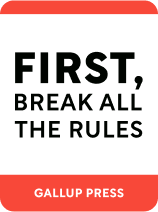

This article is an excerpt from the Shortform book guide to "First, Break All the Rules" by Gallup Press. Shortform has the world's best summaries and analyses of books you should be reading.
Like this article? Sign up for a free trial here .
What does employee performance management entail in your organization? What are the characteristics of a good performance management routine?
Employee performance management consists of meetings and conversations that help you to focus on the progress and performance of your employees. An effective performance management routine must be simple, regular, future-focused, and tailored to each individual employee.
Here are some things to think about as you design a performance management routine for your organization.
Effective Performance Management Routines
Employee performance management sessions should differ based on the needs of the employee, the company, and the position. However, good performance management routines all share the following four characteristics:
- Characteristic #1: The sessions are simple. These sessions shouldn’t use complicated terms or overblown surveys. They should contain simple questions that don’t require much deciphering.
- Characteristic #2: The sessions are frequent. Yearly meetings or reviews don’t allow you to effectively keep track of an employee’s progress. These sessions should be scheduled semi-annually at minimum. This allows you to discuss issues and accomplishments as they arise instead of in a generic fashion months after they occur.
- Characteristic #3: The sessions are focused on the future. While these sessions do require looking to the past and reviewing performance, they’re ultimately meant to help develop a plan for the future. Spend the first 10 minutes reviewing performance, then spend the rest of the session discussing future plans.
- Characteristic #4: The sessions are employee-centric. Have your employees track their own progress and discoveries. Have them write down where they’ve excelled, where they’ve struggled, and what they’ve learned. This forces employees to take responsibility for their own performance and promotes self-discovery.
Goal-Setting Meetings
Performance management relies on goal-setting meetings. These meetings are meant to discuss progress and set goals for further development. The frequency of this meeting depends on how often your employee wants to discuss progress. To prepare for this meeting, have your employee prepare answers to the following three questions:
- How would you describe your performance since our last meeting?
- What have you discovered about yourself and/or learned about your position?
- What relationships have you developed?
For the first 10-15 minutes of your meeting, discuss his responses to the questions above. Then, turn your focus to the future by asking the following questions:
- What are your primary goals over the next 6 months?
- What discoveries do you think you’ll make?
- What new relationships do you want to develop?
These questions and the discussions they spark will help you and your employee set goals that reflect their progress, their personal objectives, and their talents.
(Shortform note: other performance management meetings will be covered later in the summary for both “Key Three” and “Key Four.”)
Performance Review Sessions
Once a year (or a week or two after a new employee starts), have a full performance review session with each of your employees. These sessions help you get a better understanding of your employee’s talents, weaknesses, and motivators. This information will help you develop strategies to build up their talents, navigate around their weaknesses, and create a stronger working relationship with them.
Over the course of an hour or so, discuss the following ten questions:
- What do you enjoy most about your work here?
- If it’s a new employee: What did you enjoy most about your previous work? What made you want to come here?
- What are your strengths? This can refer to talents, skills, or knowledge.
- What are your weaknesses?
- What are your goals? Rank them and provide a timeline.
- How often do you want to discuss your progress?
- Do you readily share how you’re feeling, or do I need to ask?
- Are you working towards any personal goals?
- What is the best praise you’ve ever gotten? Why was it so special?
- Have you had a relationship with a mentor or teammate that was extremely productive? If so, why do you think the relationship was so effective?
- What are your long-term goals?
- Is there anything specific you want to learn?
- Are there specific challenges you want to tackle?
- Can I help you towards those goals? If so, how?
- Is there anything else you want to discuss that might help our working relationship?

———End of Preview———
Like what you just read? Read the rest of the world's best book summary and analysis of Gallup Press's "First, Break All the Rules" at Shortform .
Here's what you'll find in our full First, Break All the Rules summary :
- Why only 13% of the world’s workforce is actively engaged at work
- How to find strong employees and keep them
- The 12 questions to ask your employees that help you determine the strength of your organization






